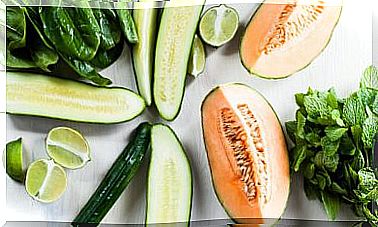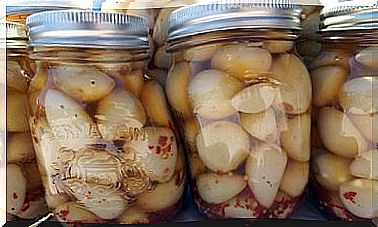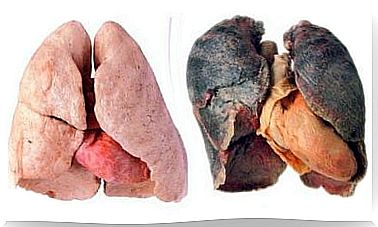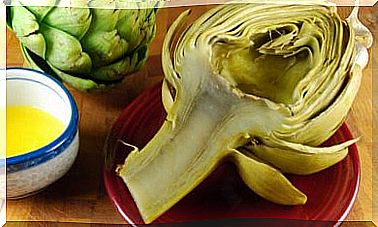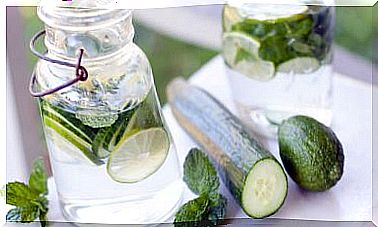6 Natural Remedies To Combat Tooth Decay
Remedies to combat tooth decay are only one adjunct against this problem. Given its complications, this disease must be operated on by a professional.
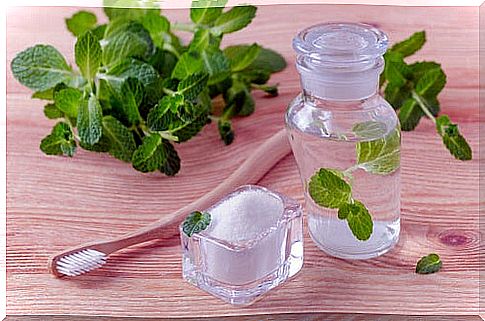
To combat tooth decay, it is important to maintain good hygiene and also have good dental control. Taking care of oral health in the hands of a professional will be possible to detect problems, give them the appropriate treatment and avoid complications.
Tooth decay is an oral disease caused by an excessive accumulation of bacteria on the surface of the teeth. These bacteria create acids (from sugar) and trigger problems such as enamel demineralization, tooth sensitivity and tooth decay.
Fortunately, as long as the intervention is timely, the prognosis is favorable. In addition, there are effective treatments for its control and some natural remedies that help calm some of its symptoms. Next we will tell you what they are and how they should be used.
How does tooth decay occur?
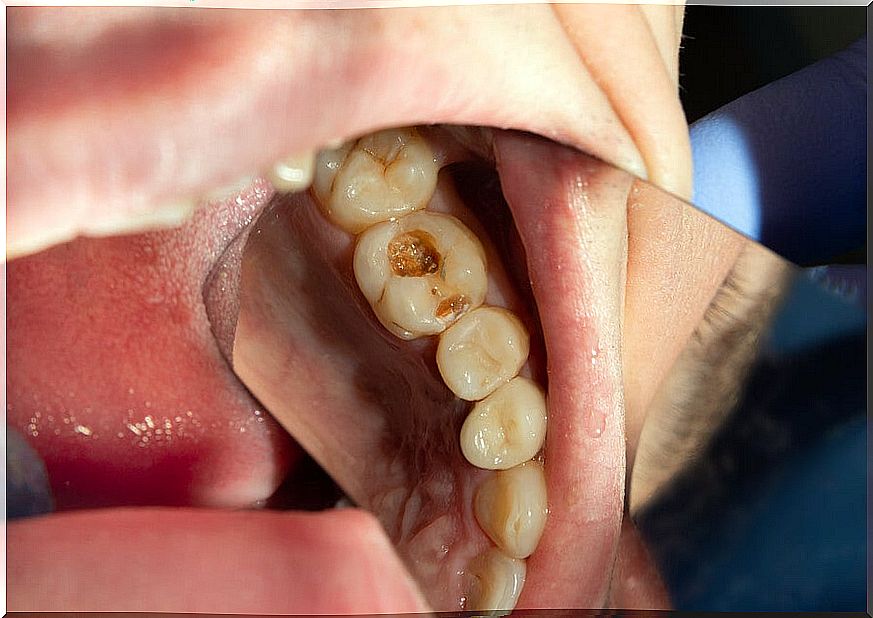
Hundreds of microorganisms live in the mouth, among which the bacterium Streptococcus mutans stands out. This is located between the teeth and on the reliefs of the crown of the premolars and molars.
When food remains accumulate in the oral cavity due to inadequate hygiene, this bacterium proliferates relatively easily. In such a process of bacterial growth, the release of acidic substances occurs.
Over the days, these generate the destruction of the tissues of the teeth until they reach the nerve endings, which causes intense pain. However, in some cases, before it reaches that chronic stage, some people experience milder pain.
Thanks to this discomfort, it is possible to sense that there is a problem and go to the dentist quickly to see how much it has affected and how it must be cared for to prevent further progress.
How to fight tooth decay?
According to a publication in the National Center for Biotechnology Information , to combat tooth decay in mild cases, good hygiene habits may be enough. Of particular note is the regular brushing of the teeth with a fluoride toothpaste and dental treatment with this same element.
However, if the disease is in a more advanced stage, the professional may choose other types of treatments. For example, when the tooth has a hole, it is filled with synthetic resins, amalgams, ceramic material or a precious metal.
If it is more severe, treatment may include a partial or complete crown for the tooth and, if nerves are involved, a root canal. In rare cases, it is necessary to remove the tooth and use an implant.
Home remedies to combat tooth decay
Cavities are a problem that must be treated directly by a dentist. However, there are several home remedies that help combat it when it is in the early stages. Of course, these remedies are only an adjunct that facilitates the control of symptoms.
For no reason should they be used as a replacement for the treatments prescribed by the professional. In addition, it must be taken into account that they come largely from popular culture and, therefore, there is no evidence of their effectiveness. If you want to try them, we reveal some of the best known below.
1. Horsetail infusion
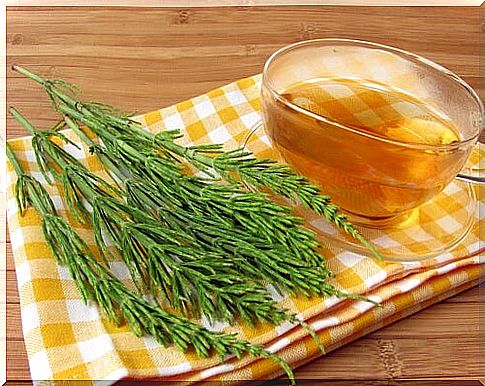
This natural remedy contains a mineral known as ‘silica’, essential to prevent the destruction of the tooth. Furthermore, according to data in a recent study published in Pharmacognosy Reviews , it acts as a natural remineralizer and has some antiseptic action that can reduce the action of bacteria.
Ingredients
- 1 tablespoon of horsetail (10 g).
- 1 cup of water (250 ml).
Preparation
- To start, heat a cup of water.
- Then, when it comes to a boil, add a tablespoon of horsetail and let it infuse for 10 minutes.
- Finally, strain and drink after lunch.
2. Horse chestnut infusion
According to information published in the journal Nature , horse chestnut ( Aesculus hippocastanum ) extracts contain saponins, collectively known as ‘aescin’. These are beneficial against the symptoms of dental disease, as they act as anti-inflammatory.
Among other things, it stimulates the secretion of saliva to cope with the proliferation of bacteria. It also has a mild analgesic effect that would help reduce tooth and tooth pain.
Ingredients
- 1 tablespoon of dried horse chestnut leaves and seeds (10 g).
- 1 cup of water (250 ml).
Preparation
- First, heat the water in a pot and add the tablespoon of dried horse chestnut leaves and seeds. Then, after five minutes, remove from the heat and let it rest.
- Take a cup every three days.
3. Infusion of chamomile

Chamomile is not only a digestive remedy. According to a study published in the Iranian journal of pharmaceutical research (IJPR) , its use as a rinse can help remove dental plaque, within a good oral care routine. This, of course, is key against cavities.
Ingredients
- 1 tablespoon of chamomile (10 g).
- 1 cup of water (250 ml).
Preparation
- To start, boil a cup of water, add a tablespoon of chamomile.
- Next, let the decoction take place for 5 to 10 minutes.
- Finally, after the recommended time, swish the infusion up to three times a day.
4. Salt and pepper powder
A paste made with salt and pepper can help fight inflammation and discomfort associated with cavities. However, given the lack of evidence on its safety and efficacy, it should be used with caution. Pepper can be irritating to some people.
Ingredients
- ¼ teaspoon of salt.
- 1 pinch of ground pepper.
- Raindrops.
Preparation
- First, make a paste by mixing the salt, pepper and a few drops of water.
- Finally, when it is ready, apply it directly to all teeth using a toothbrush.
5. Sage and mint rinse

A natural rinse with antibacterial properties can help slow the growth of bacteria. In addition, it must be borne in mind that these are the ones that cause cavities and bad breath.
Sage and mint are the special ingredients of this remedy. Besides fighting bacteria, they also help relieve pain and inflammation.
Ingredients
- ½ teaspoon of sage (2.5 g).
- ½ teaspoon of mint (2.5 g).
- ½ glass of water (100 ml).
- 1 teaspoon of Himalayan salt (5 g).
- 4 drops of liquid vegetable glycerin.
Preparation
- To begin, an infusion of sage and mint should be prepared by boiling both herbs in half a glass of water.
- Then, when it is ready, add the Himalayan salt and the 4 drops of vegetable glycerin. Stir.
- Finally, dip your toothbrush in this mixture and brush your teeth as usual.
6. Infusion of cloves
Clove is a spice with a very pleasant aroma and a slightly spicy taste. It is attributed a certain bactericidal and antiseptic effect, therefore, it could help treat cavities.
In fact, one animal study, published in the journal Experimental and Therapeutic Medicine , found that the active compound, eugenol, helps to inhibit acid production by S. mutans. This, in turn, reduced the incidence and severity of carious lesions.
Ingredients
- 1 handful of cloves.
- 1 cup of water (250 ml).
Preparation
- To start, bring a cup of water to a boil and add a handful of cloves to it.
- Then let it rest for 10 minutes and use the infusion to swish several times a day.
What else does it take to fight tooth decay?
As we have mentioned, to combat dental caries you not only have to rely on these remedies that we have mentioned, but also on a good care routine and, of course, good dental control.
Always brush after eating, floss and rinse, go to your dentist at least once every six months so that you can both prevent and detect cavities in time.
Remember that, as soon as they are detected, cavities require treatment. This allows to avoid the progression of the disease towards periodontal abscesses or other pathologies.
